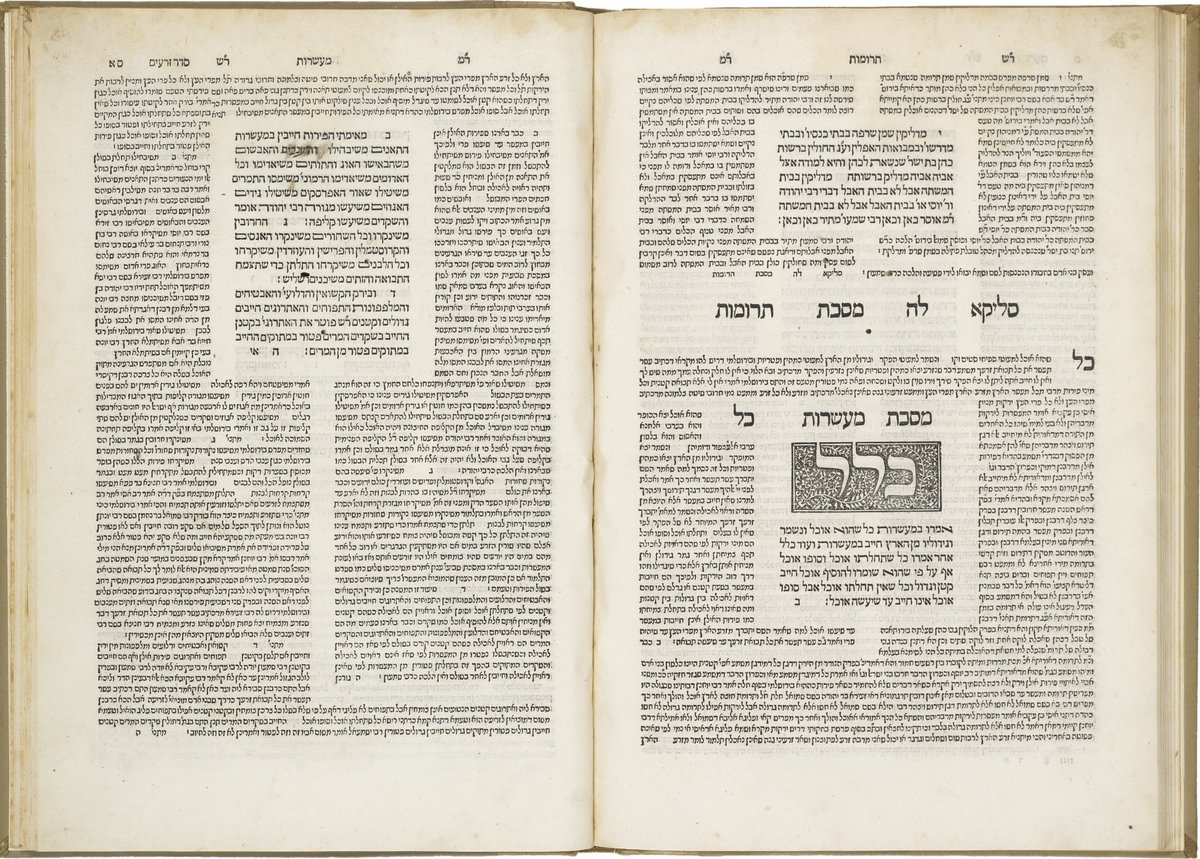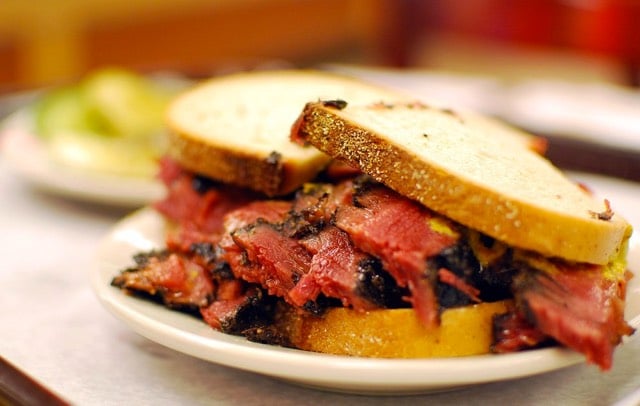
Sefaria is a free online resource for Jewish texts, specifically the Talmud, which (amazingly) wasn’t previously easily available online. This Washington Post article describes the effort behind getting the texts and their translations up and on the web.
The Talmud is notoriously hard to follow, even if you understand Aramaic. For most readers, a straight translation will not be useful, as additional, contextualizing information, based on expertise with the tradition and text, is necessary to follow the arguments.
Rabbi Adin Steinsaltz created one of the three seminal works in this regard, but it was under copyright and being published by Koren Publishers.
After a prolonged negotiation process, and a substantial gift from the William Davidson Foundation, Sefaria was able to secure the copyright. Then, they ceded their rights and made it available free to the public, a move common to nature conservancies but vanishingly rare in the publishing world, since copyright and exclusivity are major guarantors of revenue.
“Sefaria argues that these texts are our collective heritage; therefore they should be available to everyone for free,” Sarna said.
“You have access to something that Jews, for hundreds of years did not, whether it was banned, or they didn’t understand, or they couldn’t buy books,” said Rabbi Levitansky.
Making the texts available in digital form, for free, enables a lot of new use cases for the Talmud, from using code to find “fuzzy links” between different bits of the texts, to democratizing the audience. Younger, less observant readers now have access to a wider range of textual material and discussion than they did before. The text also serves as a discussion platform: its most-viewed “source sheet” is called “Is One Permitted to Punch a White Supremacist in the Face?”
I don’t know whether, as Joshua Foer has it, a digital version of the Talmud is an “advance akin to the writing down of the oral tradition after the fall of the Second Temple in A.D. 70 and the advent of the printing press.” It is, however, a very welcome transformation of a text that’s accustomed to great transformations.
And it also gets back to something I remember from the great In Our Time episode on the Talmud: that Talmud isn’t a book you read so much as a thing you do — or as Foer says, a “giant, unending conversation that spans millennia, continents, and is very much still going on to this day.”

Pastrami on Rye is a full-length history of the NYC Jewish deli, written by Judaism scholar Ted Merwin. From a review in The Economist:
Jewish delicatessens may now be known for knishes, latkes and pastrami sandwiches, but back in their heyday, during the 1920s and 1930s in the theatre district in New York, they also served beluga caviar, pâté de foie gras and Chateaubriand steak. Jewish classics were gussied up and defiled: chopped chicken liver was served with truffles. Treyf, like oysters and pork chops, was eaten with abandon alongside kosher delicacies.
That reminds me…a trip to Katz’s is looooooong overdue.
In a piece published by the Southern Poverty Law Center, David Arenberg describes his experience as one of the very few Jews in the state prison in which he’s currently incarcerated.
I am always the last person to eat. It’s part of a compromise I worked out with the skinheads who run the western state prison complex where I am incarcerated. Under this compromise, I’m allowed to sit at the whites’ tables, but only after the “heads,” and then the “woods,” and then the “lames” have eaten. I am lower on the totem pole than all of them, the untouchable. I should feel lucky I’m allowed to eat at the whites’ tables at all.
Not that there’s anywhere else I could eat. The prison yard is broken down into five distinct racial categories and segregation is strictly enforced. There are the “woods” (short for peckerwoods) that encompass the whites, the “kinfolk” (blacks), the “Raza” (American-born people of Mexican descent), the “paisas” (Mexico-born Mexicans), and the “chiefs” (American Indians). Under the strict rules that govern interracial relations, different races are allowed to play on the same sports teams but not play individual games (e.g., chess) together; they may be in each others’ cubicles together if the situation warrants but not sit on each others’ beds or watch each others’ televisions. They may go to the same church services but not pray together. But if you accidentally break one of these rules, the consequences are usually pretty mild: you might get a talking to by one of the heads (who, of course, claims exemption from this rule himself), or at worst, a “chin check.”
Eating with another race, however, is a different story. It is an inviolate rule that different races may not break bread together under any circumstances. Violating this rule leads to harsh consequences. If you eat at the same table as another race, you’ll get beaten down. If you eat from the same tray as another race, you’ll be put in the hospital. And if you eat from the same food item as another race, that is, after another race has already taken a bite of it, you can get killed. This is one area where even the heads don’t have any play.
Jeffrey Goldberg visited with Fidel Castro recently and has two posts on his Atlantic blog about his meetings with the former Cuban head of state: part one and part two.
After this first meeting, I asked Julia to explain the meaning of Castro’s invitation to me, and of his message to Ahmadinejad. “Fidel is at an early stage of reinventing himself as a senior statesman, not as head of state, on the domestic stage, but primarily on the international stage, which has always been a priority for him,” she said. “Matters of war, peace and international security are a central focus: Nuclear proliferation climate change, these are the major issues for him, and he’s really just getting started, using any potential media platform to communicate his views. He has time on his hands now that he didn’t expect to have. And he’s revisiting history, and revisiting his own history.”
This is substantial reporting but I’ll admit my favorite line was:
I’ve never seen someone enjoy a dolphin show as much as Fidel Castro enjoyed the dolphin show.
Because of Goldberg’s reportage on Castro’s remarks regarding anti-Semitism, Venezuelan President Hugo Chavez (and strong critic of Israel) announced yesterday that he would meet with Venezuela’s Jewish leaders. Someone get Errol Morris down to Cuba to make a sequel to his film about Robert McNamara. The Fog of Cold War perhaps? (via @kbanderson)
Some appliances are sold with a Sabbath Mode for those who observe the Jewish day of rest. Here are the notes for a Sub-Zero refrigerator:
- The door can be opened/closed at any time without concern of directly turning on or off any lights, digital readouts, solenoids, fans, valves, compressor, icons, tones or alarms.
- Any defrost cycle that becomes active will not be a function of the number of times or the length of time that the door is opened.
- The ice maker is disabled automatically. Ice cubes can then be made manually (using a standard ice cube tray) as needed for that Sabbath/Holiday.
- All dispenser functions are deactivated.
There are also special Shabbot elevators that stop on each floor so that no buttons need to be pushed. One could imagine a Sabbath Web Browser that would require no button pushing…it would just browse through a list of your favorite web sites automatically and you could dip in and read when you wanted.
Forgotten Architects.
Nearly 500 Jewish architects were working in Germany before 1933; today the fate of most of them is unknown. Following is a look at 43 of these architects whose groundbreaking work is sadly forgotten.
Here’s some context about the project.







Stay Connected